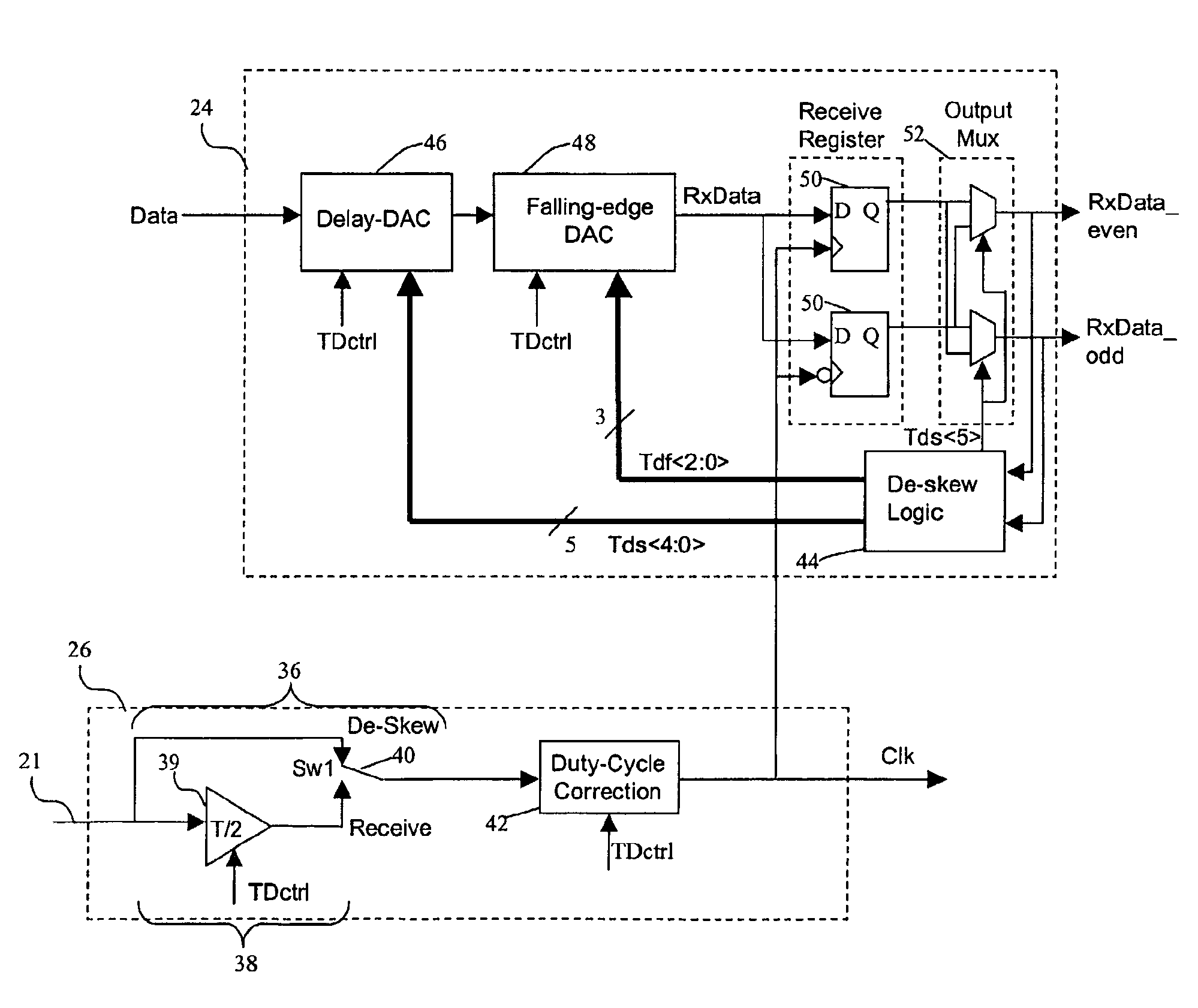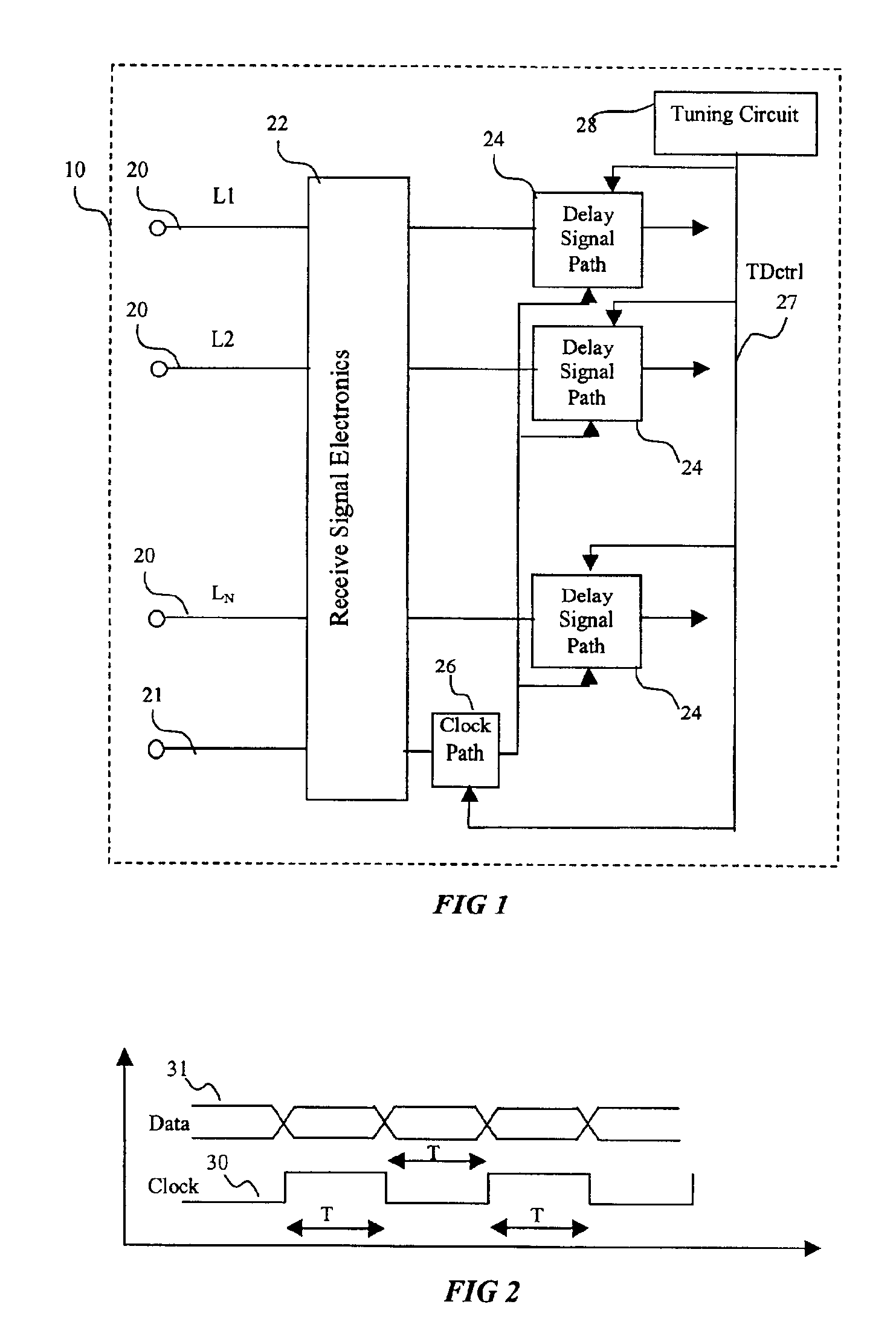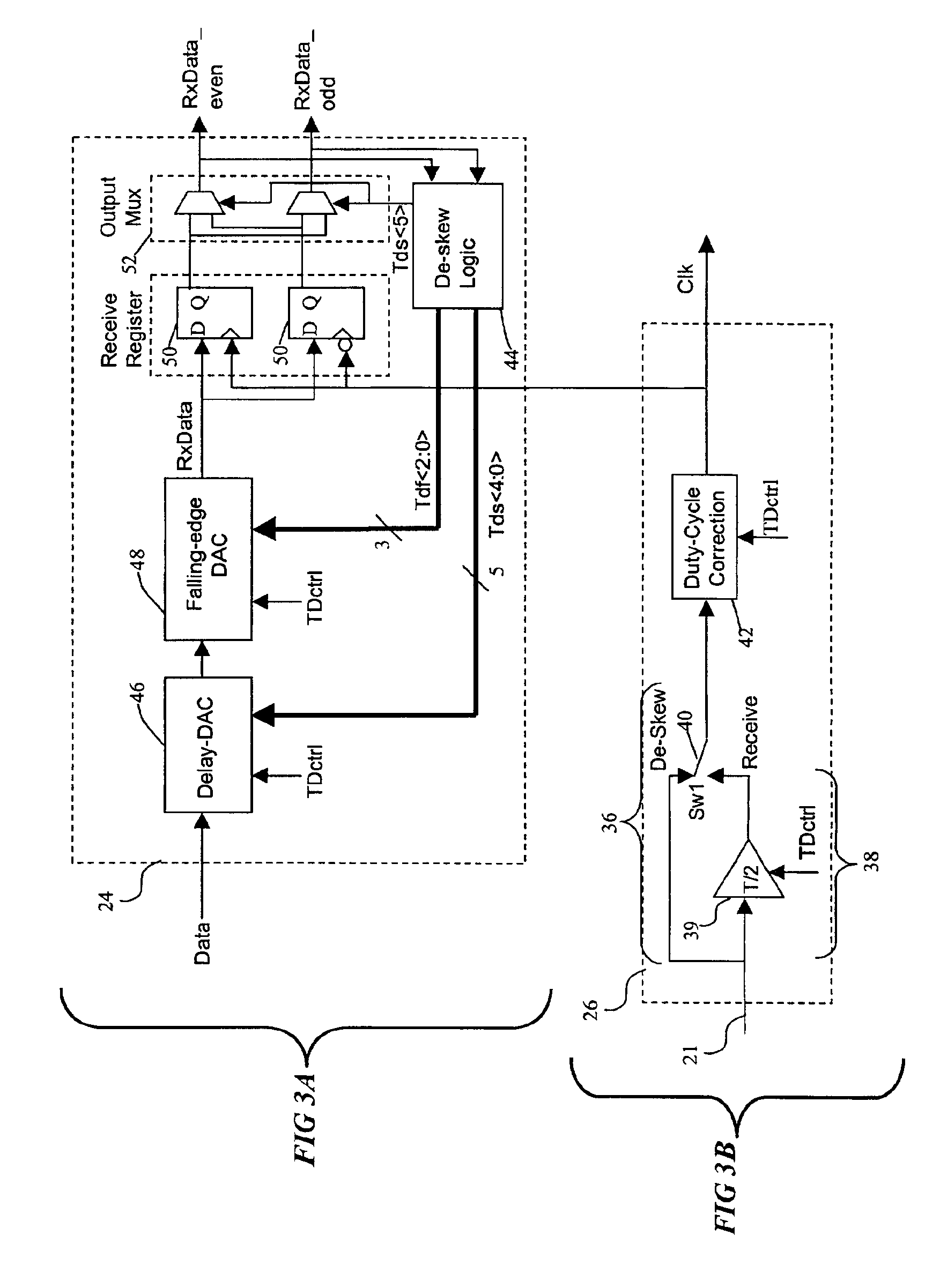Timing skew compensation technique for parallel data channels
a timing skew and data channel technology, applied in pulse techniques, generating/distributing signals, instruments, etc., can solve the problems of increasing the speed of the bus, increasing the maximum timing skew, and increasing the problem of timing skew, so as to achieve the effect of substantially operating
- Summary
- Abstract
- Description
- Claims
- Application Information
AI Technical Summary
Benefits of technology
Problems solved by technology
Method used
Image
Examples
Embodiment Construction
ting the various potential falling edge delay values using a falling edge DAC according to the present invention;
[0028]FIG. 9A is a comparative waveform illustration showing the potential effect of the falling edge DAC according to the present invention when data is early;
[0029]FIG. 9B is a comparative waveform illustration showing the potential effect of the falling edge DAC according to the present invention when data is late;
[0030]FIG. 10 is a schematic of a circuit implementation of a delay cell of the falling edge DAC of FIG. 7;
[0031]FIG. 11 is a flow chart diagram illustrating the blocks of a process according to the present invention.
DETAILED DESCRIPTION
[0032]Referring now more particularly to the drawings, FIG. 1 is a schematic of the receive-side of a parallel data bus, indicated generally at 10. In this schematic, the data bus 10 consists of a plurality of individual data lines 20 (labeled L1-Ln) supplying data in parallel and a clock line 21. Each individual data line 20 ...
PUM
 Login to View More
Login to View More Abstract
Description
Claims
Application Information
 Login to View More
Login to View More - R&D
- Intellectual Property
- Life Sciences
- Materials
- Tech Scout
- Unparalleled Data Quality
- Higher Quality Content
- 60% Fewer Hallucinations
Browse by: Latest US Patents, China's latest patents, Technical Efficacy Thesaurus, Application Domain, Technology Topic, Popular Technical Reports.
© 2025 PatSnap. All rights reserved.Legal|Privacy policy|Modern Slavery Act Transparency Statement|Sitemap|About US| Contact US: help@patsnap.com



